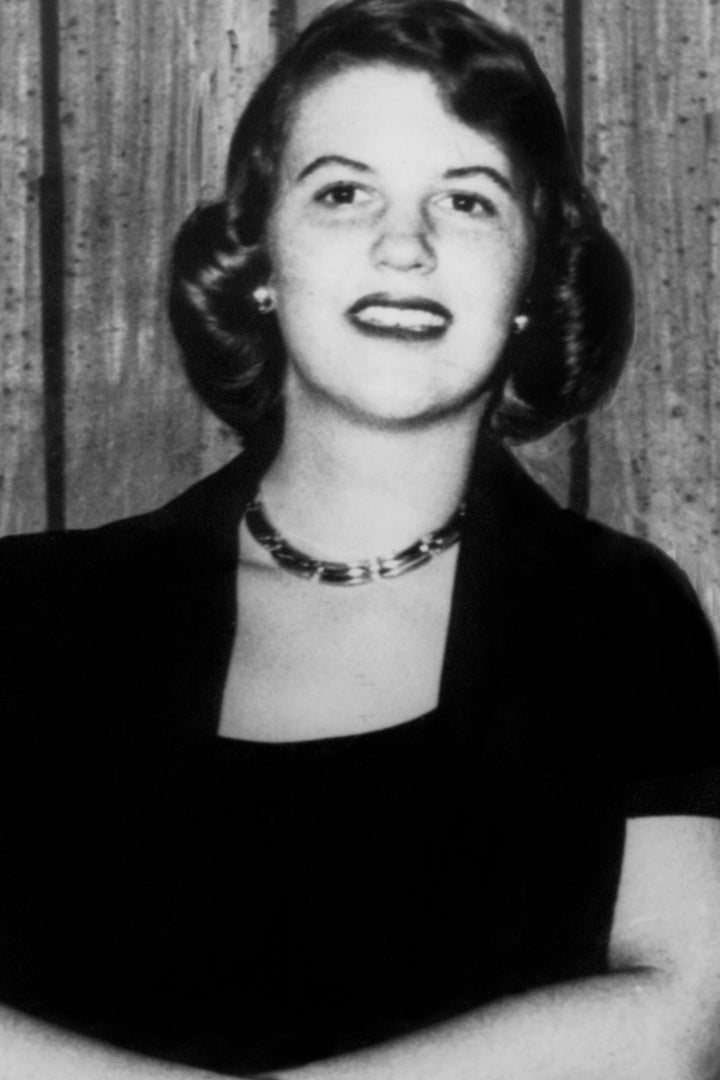
Last month, we celebrated the 50th anniversary of Sylvia Plath's The Bell Jar, the story of a young, well-educated woman negotiating her personal and professional options in a society deeply engaged in its own refashioning. Today, we remember Sylvia Plath 50 years after her untimely death. Even after the publication of the prescient The Bell Jar, Plath's decision to end her own life continues to shock and upset us. Esther Greenwood, the ambitious recent college graduate serving as the vessel for Plath's lamentations, would have far fewer complaints in 2013 than the 1950s milieu in which the novel takes place. But would Sylvia Plath, the overwhelmed wife and mother of two with high professional ambitions, have found satisfying support for what she'd want her life to look like?
When situated in a broader historical context, The Bell Jar reflects the spirit and tenor of a postwar period. Plath writes in period of Cold War McCarthyism, when heightened importance was conferred upon the nuclear family, with women the containers of consistency and security. As women's sexuality and professional choices become increasingly untethered from social order, the suffocating mushroom cloud of this brand of altruistic domesticity has dissipated into a thin haze.
In this sense, some of The Bell Jar reads like Austen -- a literary vestige of times gone by. Still, I've always recognized myself and my peers in Plath's broad strokes. Particularly in Plath's 'fig tree,' a metaphor for the lack of dimension often demanded of women's lives, in which Esther finds her self "starving to death" when she is unable to choose which metaphorical "fig" to reach for: tranquil domesticity in the suburbs, a life of travel or a career as a poet among them. Eventually, every fig rots and falls to the ground.
While many women today don't need to make one choice to the complete exclusion of another, Anne-Marie Slaughter reminded us this year that satisfying one area inevitably causes another to suffer. As such, does the persistent resonance of The Bell Jar, and of Plath's life itself, represent a literary achievement or a cultural failure?
Again, some of Plath's tacit prescriptions have been fulfilled. She considered that even intellectual women in the 1950s used their education as merely a bridge to married life. Thankfully, excessive ambition has evolved from pathological to commonplace, and young women no longer need to balance chasteness with seduction. Subjects in Hanna Rosin's Atlantic piece "Boys on the Side" admit "work[ing] to avoid" relationships in the interest of self-realization. The collective eye roll received by "The End of Courtship" in the New York Times reminds us that women don't sit around waiting to be "chosen" and find value outside of how enthusiastically they are "courted." This, coupled with Rosin's piece on hookup culture, relieve two of Plath's major grievances in The Bell Jar -- society's insistence on chastity and ambition's deleterious effect on desirability.
But there were other challenges in Plath's life for which we have not found relief. Esther Greenwood's failed attempt to end her life and the ultimate suicide of Sylvia Plath at age 30 do not just reflect one mentally- troubled individual's descent into a depression. More than that, it was the reaction of a woman whom society deceived into believing she could really "have it all."
So then: Is today's a better world for the young, fresh-faced, post-grad Esther Greenwood? Certainly. But what about for Sylvia Plath, the mother of two, with marital distress and high professional goals? It would be irresponsible to suggest that every modern working mother is reduced to irrepresible depression. Rather, the question here is why we privilege the exaltation and acceptance of young women's choices and pay less attention to those of professional women with families.
Young women, especially of the millennial generation, who express agency and ownership of their sexuality while establishing their own trajectories and criteria for romantic relationships are celebrated in the mainstream media. Obviously, their lives are far more amenable to prime time half-hour dramedies than a working mother pumping breast milk while crunching numbers. Female-driven stories chronicling exploits of adventurous, often hedonistic young women are everywhere -- HBO's Girls is the most visible and culturally relevant example. But why do we endorse the self-exploration and freedom from old school expectations for young women, while opportunities for professional and intellectual cultivation remain prohibitive for women with families? Is anyone pitching Women to Showtime?
Certainly, from age to socioeconomic background to ethnicity, every woman's experiences are different. But the degree of compartmentalization involved in considering women's lives deserves scrutiny. Will rave reviews of pop culture 20-somethings actually influence how women are able to live their lives, or are they just shallow, self aggrandizing attempts to be woman-friendly? Will our acceptance of Hannah Horvath's half-lucid hookups with questionable suitors translate into policy changes allowing for more upward mobility and flexibility in professional women's lives?
Praising young women who tell the truth about their lives is invaluable. Perhaps imbuing young women with a sense of liberation will impel them to demand more accommodation as they ascend professionally and begin making decisions about how to organize their families. But liberation is not necessarily freedom. Esther Greenwood wanted to be liberated. Sylvia Plath wanted to be free -- free to make choices that didn't cage her from other possibilities.
We should celebrate that our lives, for what they truly are, are finally integrated into the cultural vocabulary. But it's not enough that who we are be nurtured -- who we aspire to be still requires support and activism. It doesn't really matter if society is cool with us making sexcapade slideshows or wearing see-through tops if 10 years from now, caring for a sick child compromises our promotions. We have to find a way to leverage the sudden acceptance and celebration of our choices into substantive discussions about structural changes.
In 1963, Sylvia Plath wrote "What a man is, is an arrow into the future and what a woman is is the place the arrow shoots off from," while Esther Greenwood "wanted change and excitement and to shoot off in all directions myself, like the colored arrows from a 4th of July rocket." Plath would be proud to know we can shoot off from wherever we want, but how brightly and how long we can burn remains to be seen.
